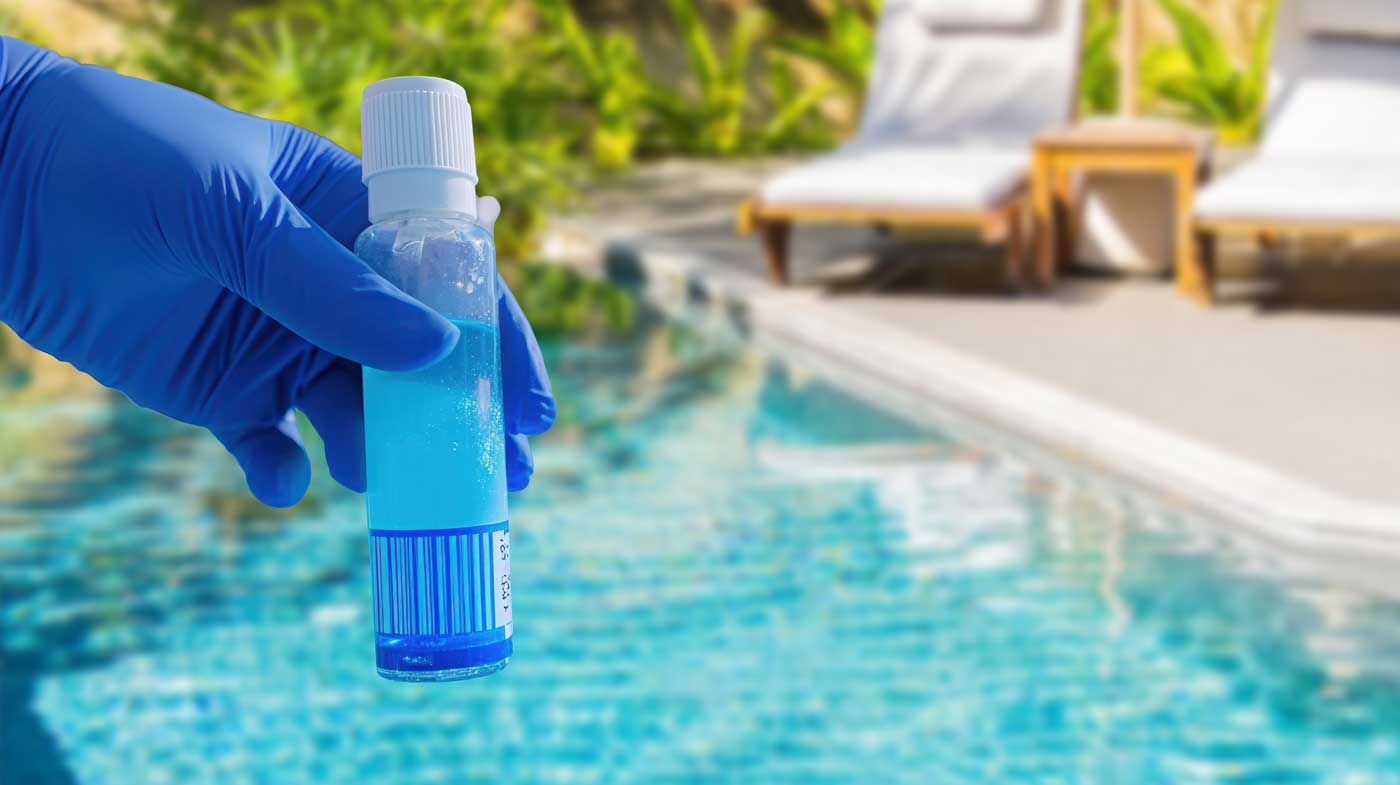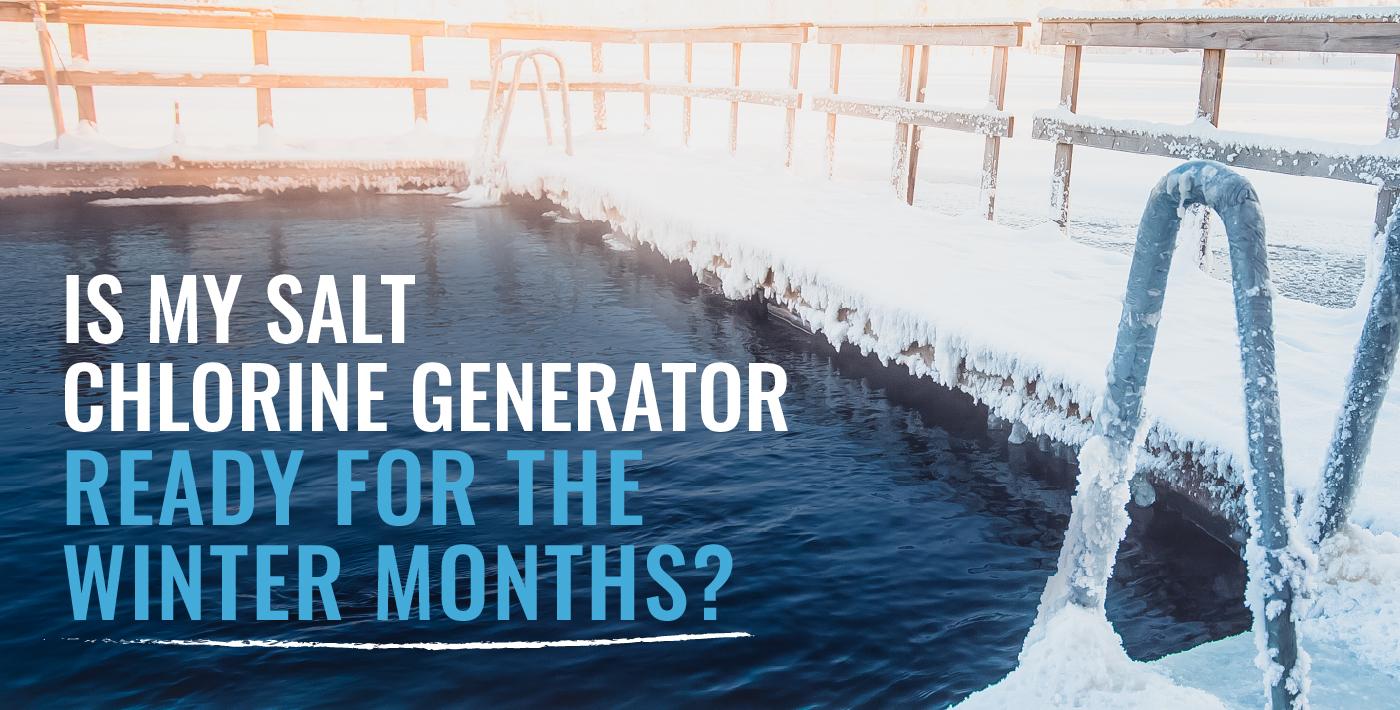Also, warranties can be voided if improper water chemistry is determined to be the reason…
Which Is The Best Method For Sanitizing My Pool?
Different swimming pools call for different systems. Many homeowners struggle while trying to select sanitization systems for their swimming pools because they have many options to choose from. The truth is: no single system is best. You should therefore consider a number of variables when selecting a sanitization system, including initial costs, maintenance costs, maintenance tasks, climate, and number of swimmers. In this article, we briefly discuss five popular swimming pool sanitization methods and we list advantages and disadvantages of each.
Chlorine
Chlorine has historically been the most widely-used chemical for swimming pool sanitization, though several alternative sanitation methods have recently gained popularity. It kills bacteria by undergoing a simple chemical reaction. In this chemical reaction, chlorine breaks down into hypochlorous acid and hypochlorite ions, which then oxidize bacteria until they are neutralized or destroyed.
Advantages of Chlorine Sanitization
- Chlorine has a long half-life and can therefore be stored for long periods of time.
- It is available to consumers in many different forms. It can be found as a gas, liquid, or solid.
- Chlorine has a residual effect: not only does it neutralize contaminants when it is first added to swimming pool water, but it also continues to neutralize long afterward.
Disadvantages of Chlorine Sanitization
- Byproducts of chlorine are chloramines and trihalomethanes (THMs), which cause skin and eye irritation to swimmers.
- After being added to a swimming pool, chlorine dissipates very quickly. Swimming pools that utilize chlorine must therefore be regularly tested and maintained.
- Chlorine Byproducts have been associated with a number of health issues, including respiratory problems.
Salt Chlorine
Salt chlorine generators utilize a chemical process called electrolysis to form hypochlorous acid (a sanitizer) from salt and water. The key characteristic that distinguishes salt chlorine from its sanitizing counterparts is its ability to recycle itself. After the hypochlorous acid sanitizes the swimming pool water, it reverts back to salt, and then the process repeats. Salt chlorine generators have gained much popularity with homeowners recently, and the market for them is likely to expand further in the near future.
Advantages of Salt Chlorine Sanitization
- Because the chlorine generated is so concentrated at the point of production (inside the salt cell), swimming pool water is superchlorinated when it passes through the energized cell. This superchlorination helps combat the buildup of chloramines.
- Swimmers experience less skin and eye irritation in salt chlorine swimming pools than in traditionally-chlorinated swimming pools.
- Salt chlorine produces nearly neutral pH levels, so few additional chemicals are required to balance the pH levels in salt chlorine swimming pools.
Disadvantages of Salt Chlorine Sanitization
- Salt chlorine generators typically cost between $300 and $10,000 to purchase.
- Salt cells typically cost between $900 and $1,500 and must be replaced once every three to five years.
- Excessive salt concentration is corrosive and can contribute to the breakdown of handrails, lighting systems, swimming pool liners, and other equipment. It can also damage swimming pool decks.
Bromine
Bromine is very similar to chlorine as it applies to swimming pool sanitization, though bromine’s byproducts differentiate it from chlorine. When chlorine reacts with contaminants in swimming pool water, chloramine is formed. Similarly, when bromine reacts with contaminants in swimming pool, bromamine is formed. The difference lies in the effect of these byproducts on the swimming pool. Whereas chloramines offer no benefit to swimming pool water, bromamines retain the sanitizing characteristics of bromine. For this reason, many homeowners have turned to bromine as their swimming pool’s sanitizing agent.
Advantages of Bromine Sanitization
- It is more stable than chlorine in warmer temperatures, which makes excellent for sanitization in indoor or covered spas.
- The smell of bromine is less pungent than that of chlorine.
- Bromine continues to work even after it combines with contaminants, and it therefore sanitizes for a longer period of time than chlorine.
Disadvantages of Bromine Sanitization
- Bromine is a weak oxidizer.
- Bromine is more expensive to purchase than both chlorine and salt.
- Though the smell of bromine is less pungent than that of chlorine, the smell of bromine is more difficult to get rid of.
Ozone
Ozone is an unstable, inorganic gas that is created when free oxygen atoms collide with oxygen molecules. It is manufactured by subjecting oxygen molecules to either a high-voltage ionization process or to ultraviolet radiation. Most ozone generators utilize the high-voltage ionization process because it results in a much higher concentration of ozone (20% by the high-voltage ionization process versus 5% by ultraviolet radiation).
Advantages of Ozone Sanitization
- Ozone is a strong oxidizer. Specifically, it is 100 times stronger than chlorine.
- It reduces the need for swimming pool maintenance: it breaks down filter-clogging contaminants such as grease and oils.
- Ozone has no effect on the pH levels of swimming pools. Swimming pools that utilize ozone, therefore, require much less pH adjustment. This translates to less chemical usage.
Disadvantages of Ozone Sanitization
- Ozone has a short half-life: it cannot be stored, but instead must be used soon after it is produced, and is only effective as it mixes with the water in the return line. After it returns to the pool, Ozone is released back to the atmosphere.
- It alone is not a sufficient sanitization method for most swimming pools, as it cannot eliminate all swimming pool contaminants. However, Ozone is compatible with Chlorine or Bromine.
- Ozone gas is harmful in high concentrations.
Ionizers
Ionizers release ions of copper and hard metals into swimming pool water. Basically, they kill bacteria by exposing them to these ions. Two forms of ionizers exist. The first is an electric ionizer, which utilizes electricity to charge the metals until they release ions. The second is a mineral cartridge ionizer, which utilizes the water flow through a mineral packet to steadily release the metal ions.
Advantages of Ion Sanitation
- Ionizers are inexpensive to maintain. The electrode components of ionizers typically last between three and five years, and they are fairly inexpensive to replace.
- Ionizers reduce the need for many swimming pool chemicals. (I question this point. It only adds copper to prevent the need for copper based algaecides, which most people do not use, unless they have an algae problem, and may provide a minimal sanitizing effect. It may reduce the amount of chlorine needed, although as you mention in the disadvantages, sanitizer is still needed. More pH testing will be needed, as the pH will greatly affect any staining potential of the copper on pool sufaces.)
- Unlike chlorine, the metal ions produces by ionizers do not negatively affect swimming pool equipment. The equipment in ionized swimming pools therefore has a longer lifespan.
Disadvantages of Ion Sanitation
- Ionizers do not oxidize swimming pool water.
- The metal ions released by ionizers are slow-acting and, as such, take several hours to start fighting contaminants.
- Though they reduce the need for many chemicals, ionizers cannot alone sufficiently sanitize swimming pool water. Some amounts of chlorine are still needed.
- pH must be maintained within a certain range or copper staining will occur.
Again, remember to consider a wide range of variables when selecting a sanitization system, as they will help determine which system is best for your swimming pool. If you are unsure about which system to select, let us at AutoPilot help! Contact us directly here or leave a comment below.



This Post Has 0 Comments